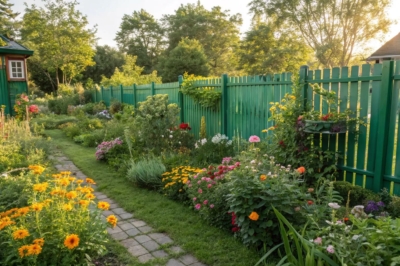1. Privacy Screens with Tall Plants
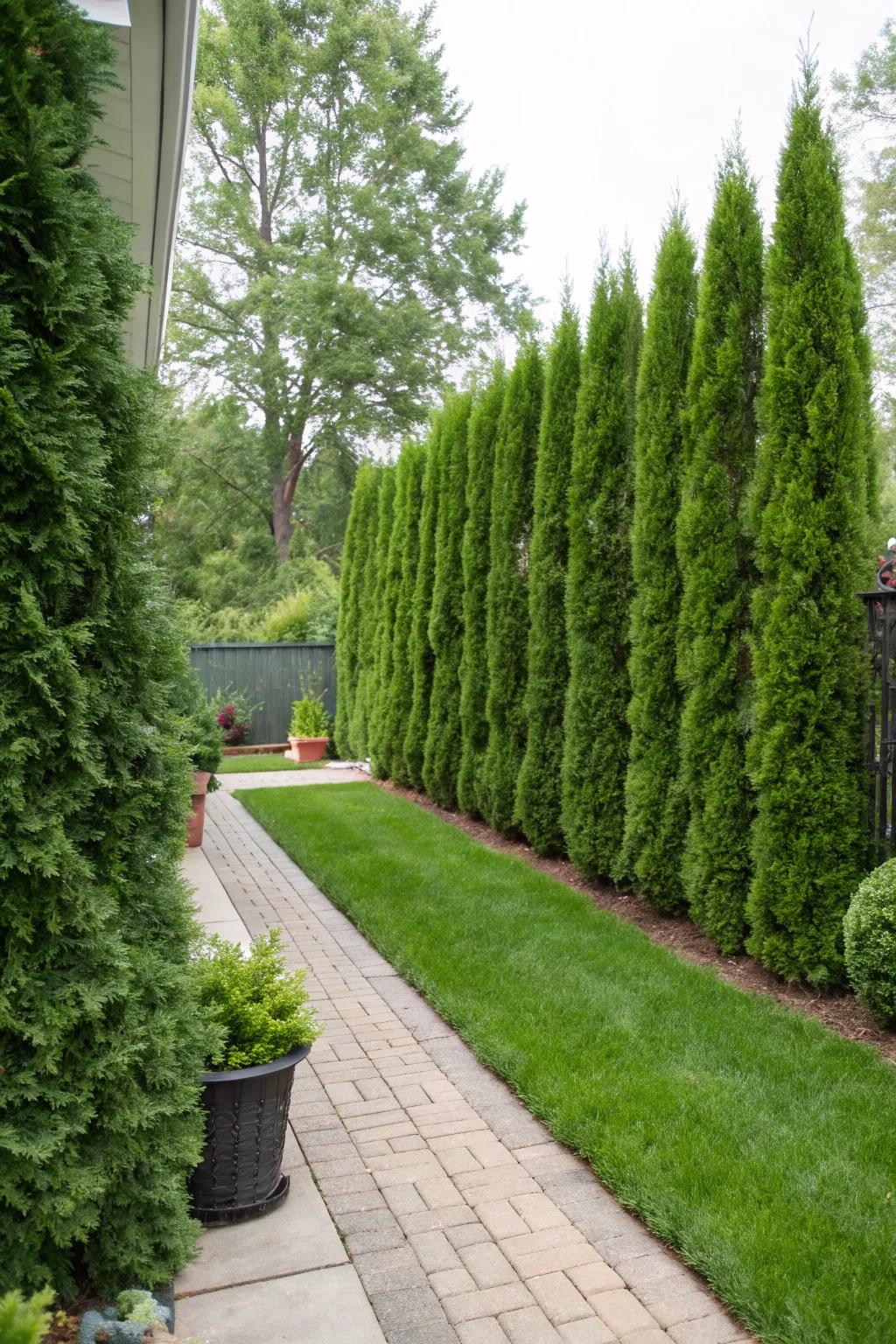
Tall, leafy plants like arborvitae can create a natural barrier that’s both beautiful and effective for privacy. My yard feels like a secluded retreat thanks to these.
Useful items to consider:
- Artificial Arborvitae Privacy Fence: Enhance your outdoor space with lifelike artificial arborvitae, offering privacy without maintenance hassle.
- Expandable Faux Ivy Privacy Fence Screen: Add instant greenery to your fence and enjoy enhanced seclusion effortlessly with this ivy screen.
- Tall Outdoor Planters for Privacy Hedges: Elevate your space with stylish planters, perfect for housing tall hedges for added privacy.
2. Dense Hedging Plants
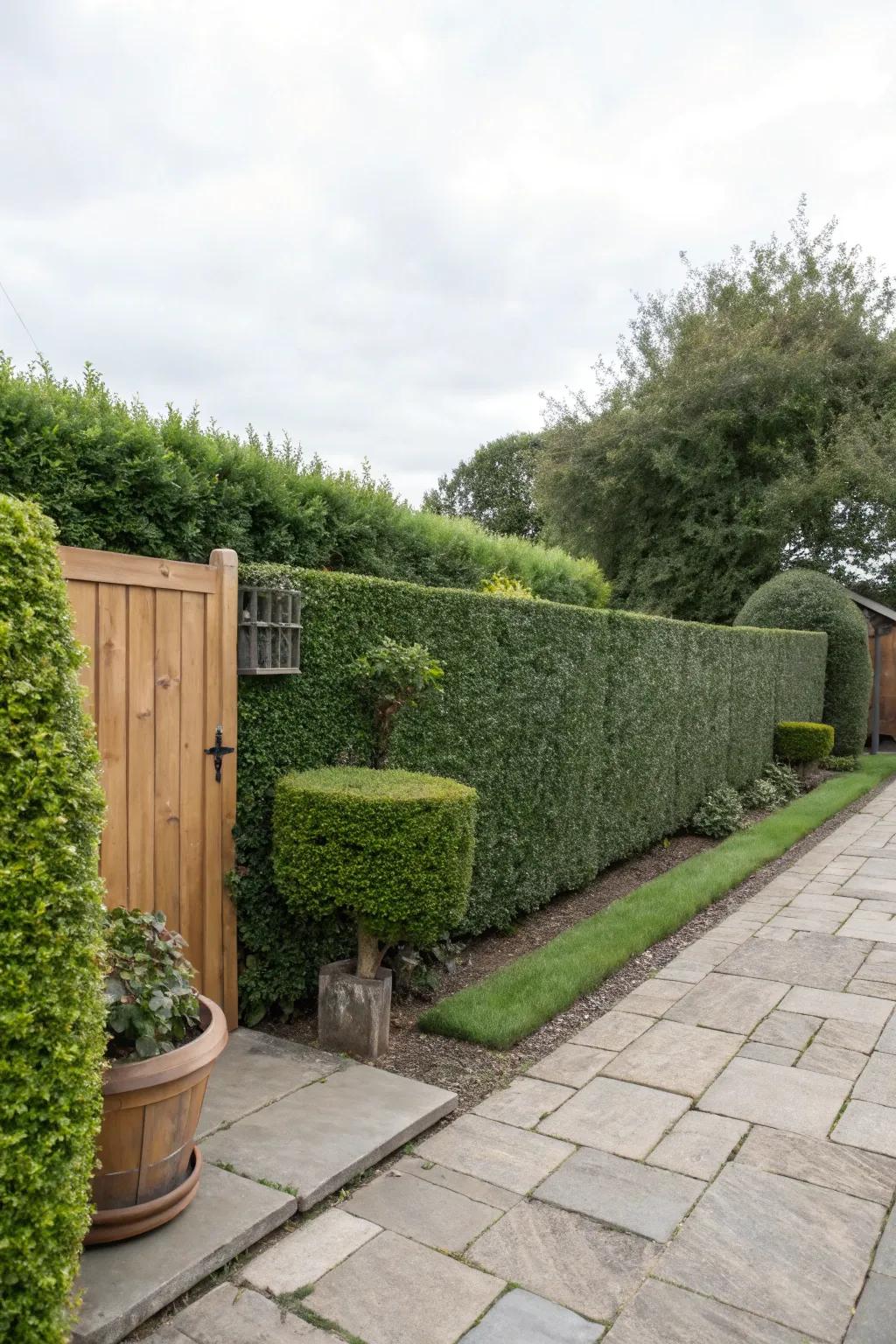
Nothing beats the classic look of a dense hedge for natural privacy. I love using boxwood for a timeless, sophisticated vibe that’s easy to maintain.
A few helpful options:
- Boxwood Shrubs for Hedging: Create a lush, green barrier with these easy-to-maintain boxwood shrubs for privacy.
- Hedge Trimming Shears: Keep your hedges looking neat and tidy with precision-crafted hedge trimming shears.
- Organic Hedge Fertilizer: Nourish your hedges with this organic fertilizer, promoting healthy growth and deep green foliage.
3. Windbreak Fencing
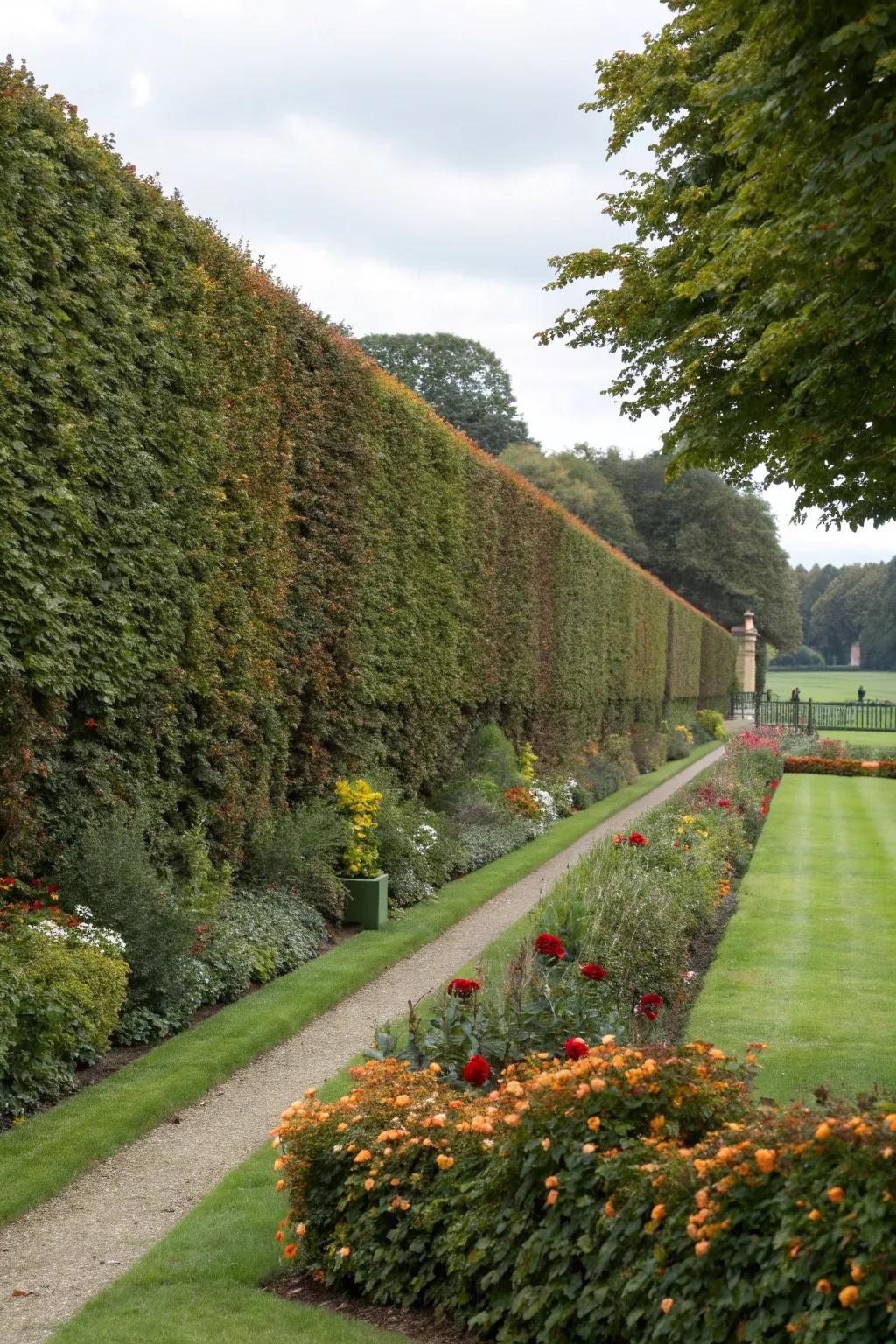
If you’re in a windy area, consider a windbreak with dense plants. It’ll protect your garden and add a cozy feel.
You might give these a try:
- Dense Evergreen Shrubs: Enhance your garden’s wind protection with dense evergreens for a lush, cozy environment.
- Tall Ornamental Grass: Create a natural windbreak with tall ornamental grass, adding texture and movement to your garden.
- Customizable Garden Arbor: Install a garden arbor with climbing plants to provide both beauty and wind protection.
4. Holly for Year-Round Privacy

With its glossy leaves and bright berries, holly makes for a beautiful, evergreen fence. Plus, it’s a favorite among birds in my garden.
A few relevant products:
- Evergreen Holly Shrub Seeds: Plant evergreen holly shrubs with these seeds for a lush, year-round privacy fence.
- Bird-Friendly Berry Fertilizer: Enhance berry production and attract birds with this specially formulated holly shrub fertilizer.
- Pruning Shears for Holly Maintenance: Keep your holly privacy fence neat with these durable, easy-to-use pruning shears.
5. Edible Berry Bushes

Why not add some flavor to your fence with berry bushes? I love picking fresh berries right in my backyard.
Try these:
- Mixed Berry Bush Seedling Kit: Plant berry seedlings to create a colorful and flavorful border along your fence.
- Berry Fertilizer for Optimal Growth: Boost your berry bushes with specialized fertilizer for vibrant and delicious fruit yields.
- Garden Netting for Berry Protection: Protect your berry bushes from birds and pests with durable, easy-to-install garden netting.
6. Climbing Plants for Fences
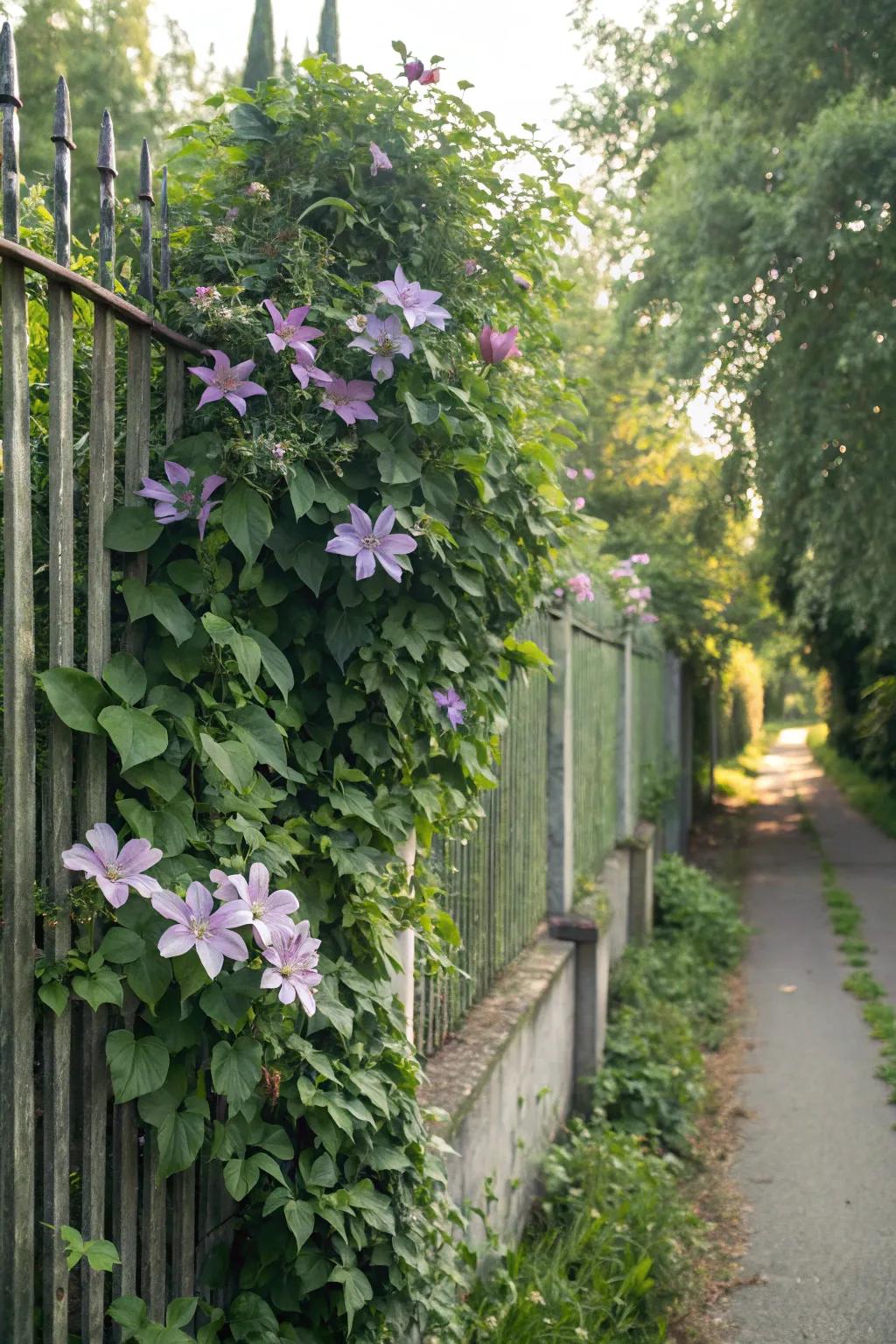
Let nature take over by letting climbing plants like ivy or clematis weave their magic on your fence. In my garden, this approach adds a romantic, whimsical touch.
A few suggestions:
- Garden Trellis for Climbing Plants: Support your climbing plants with a sturdy trellis. Enhance vertical growth for lush, beautiful coverage.
- Organic Fertilizer for Flowering Vines: Boost your climbing plants’ growth with organic fertilizer. Encourage vibrant blooms and healthy vines.
- Climbing Plant Starter Kit: Kickstart your garden with an easy-to-use starter kit. Perfect for beginners and plant enthusiasts.
7. Flowering Shrubs for Color
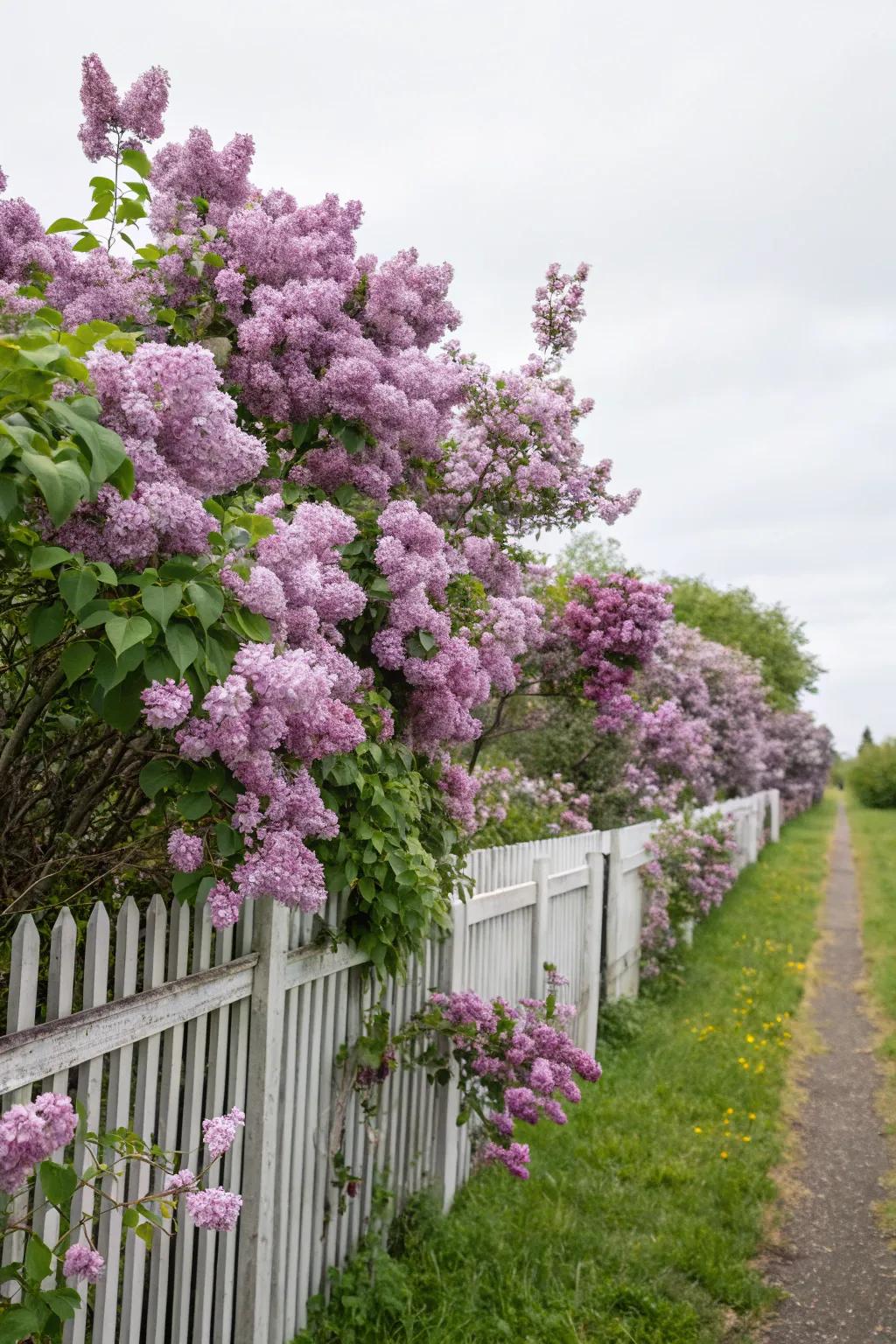
Who says fences can’t be colorful? Flowering shrubs like lilacs can add a burst of color and fragrance to your garden.
These products might help:
- Lilac Shrub Starter Plants: Transform your garden with beautiful lilac shrubs that offer vibrant color and pleasant fragrance.
- Organic Fertilizer for Flowering Shrubs: Enhance the growth of your flowering shrubs with this effective and natural organic fertilizer.
- Pruning Shears for Garden Maintenance: Keep your flowering shrubs neat and healthy with reliable pruning shears designed for precision trimming.
8. Intriguing Cloud Pruning
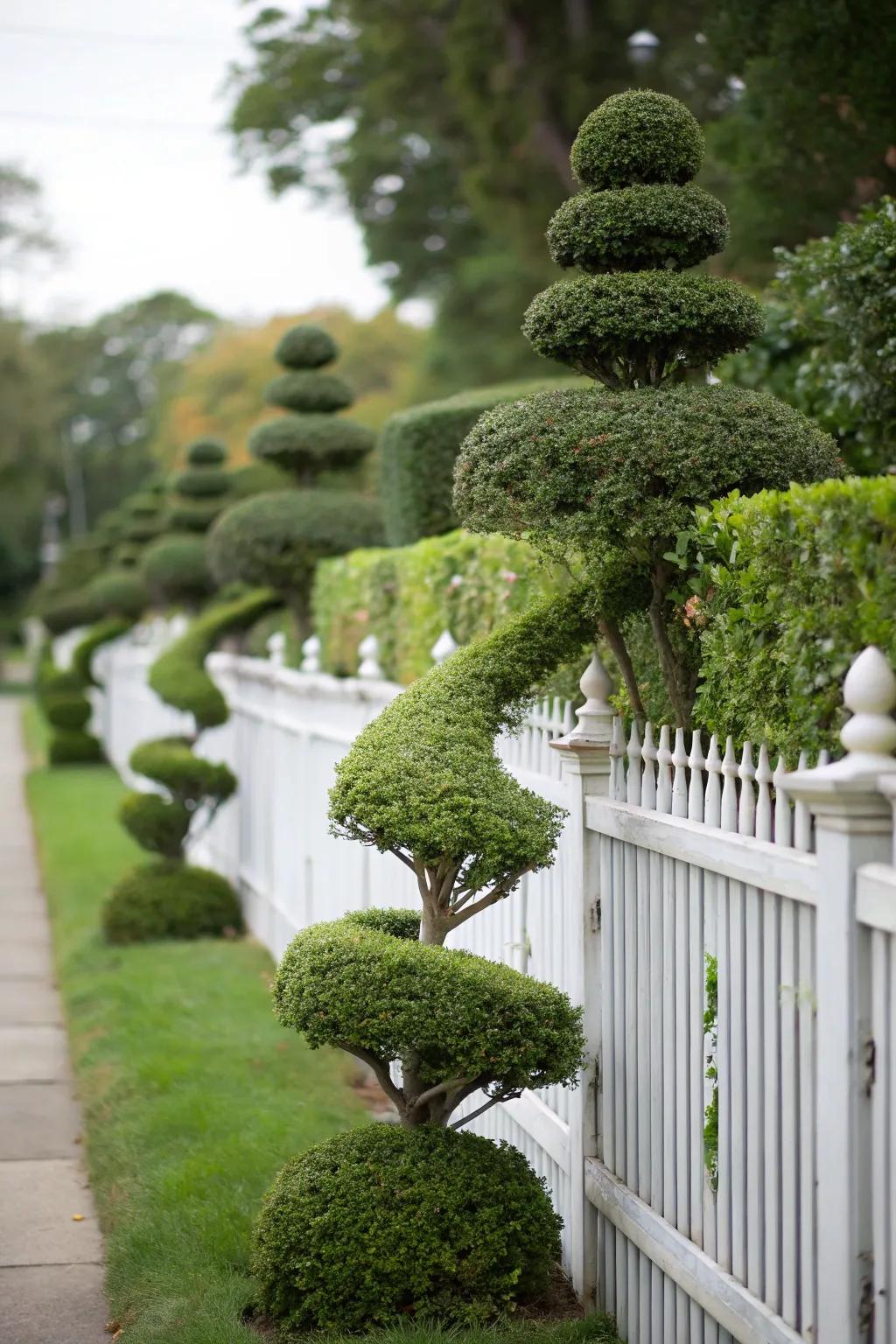
Add an artistic touch with Japanese-inspired cloud pruning. It’s a bit of work, but the results are incredibly elegant.
Possibly helpful picks:
- Topiary Shears: Shape your plants effortlessly with topiary shears designed for precise cloud pruning cuts.
- Portable Ladder: Reach high branches safely with this stable portable ladder, ideal for cloud pruning needs.
- Garden Pruning Gloves: Protect your hands while pruning with durable, comfortable garden gloves for safe trimming.
9. Azaleas for Show-Stopping Color
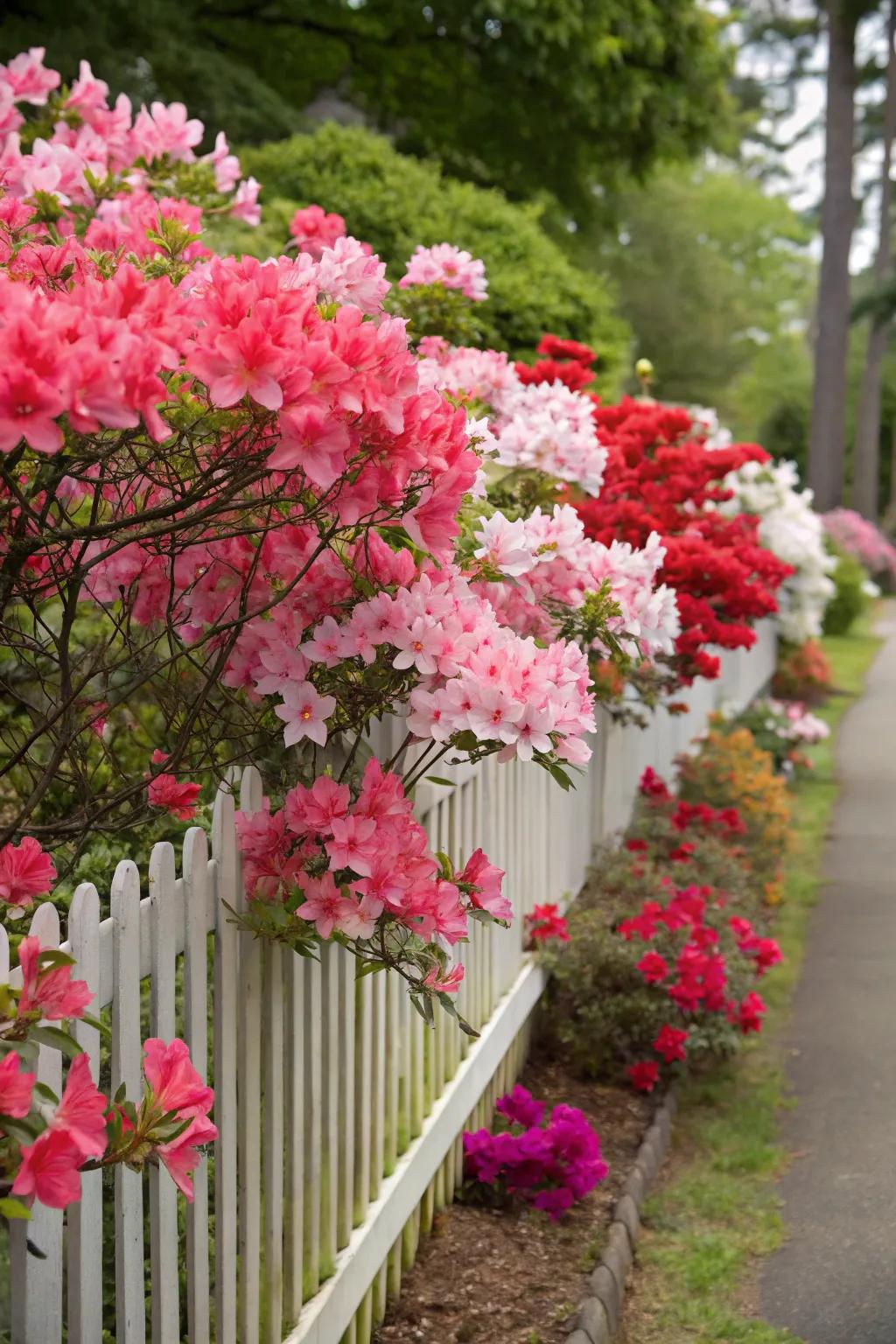
Fill your fence line with azaleas for a show-stopping display of color. It’s like having a front-row seat to a floral concert!
A few things you might like:
- Azalea Plant Starter Kit: Grow stunning azaleas effortlessly with this starter kit. Perfect for boosting your fence’s appeal.
- Organic Azalea Fertilizer: Nourish your azaleas with this organic fertilizer for vibrant blooms and healthy growth.
- Garden Pruning Shears: Keep your azaleas in shape with quality pruning shears for precise and easy trimming.
10. Layered Landscaping
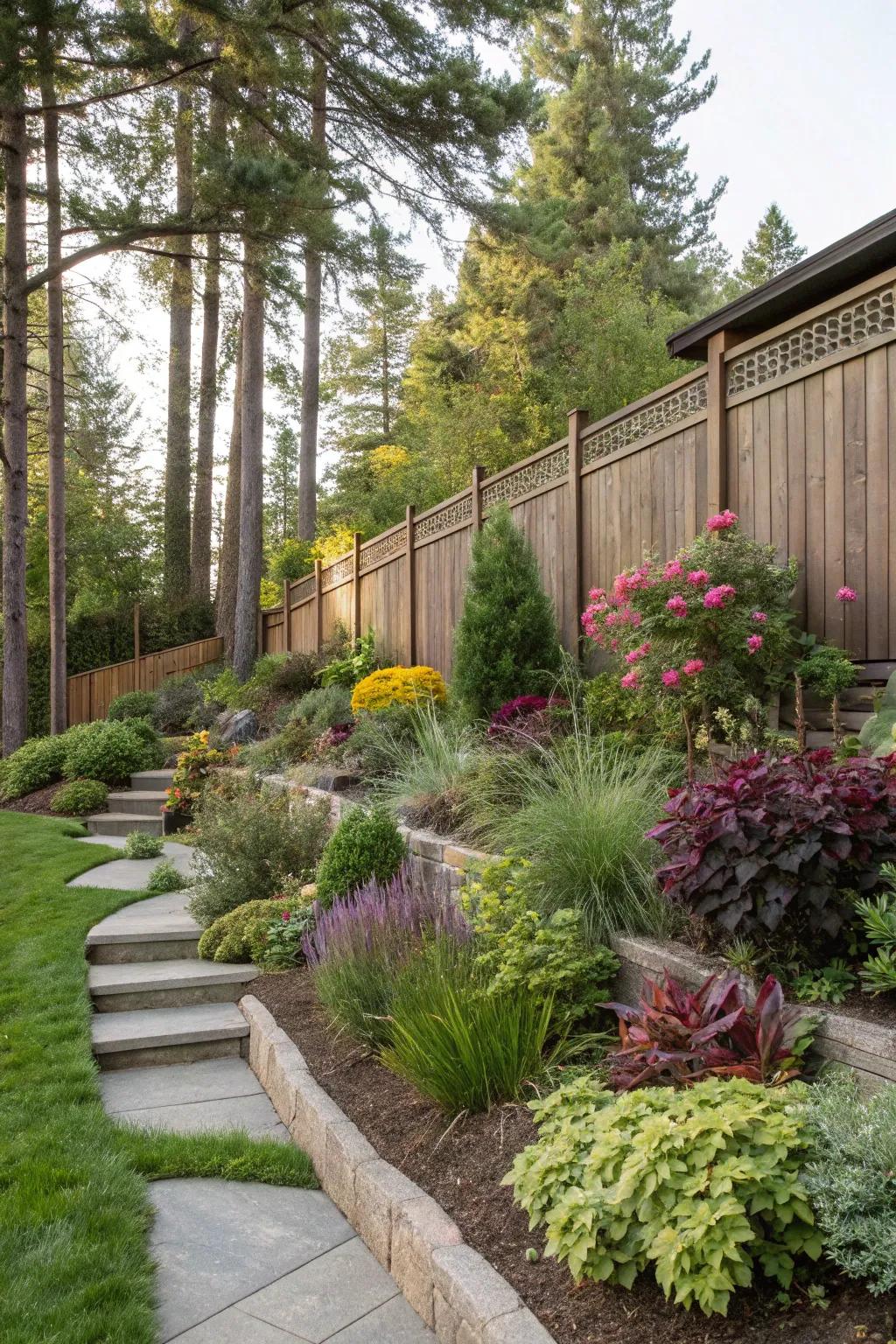
Add depth to your garden by layering plants from short to tall. In my experience, this technique makes the space feel more dynamic and lush.
Give these a look:
- Assorted Evergreen Shrubs: Enhance your garden’s foundation with lush evergreen shrubs for year-round greenery and depth.
- Perennial Flower Pack: Add vibrant colors to your garden layers with a mix of hardy perennial flowers.
- Dwarf Ornamental Grasses: Create texture and flow with dwarf ornamental grasses perfect for front-layer planting.
11. Living Walls with Wire Mesh
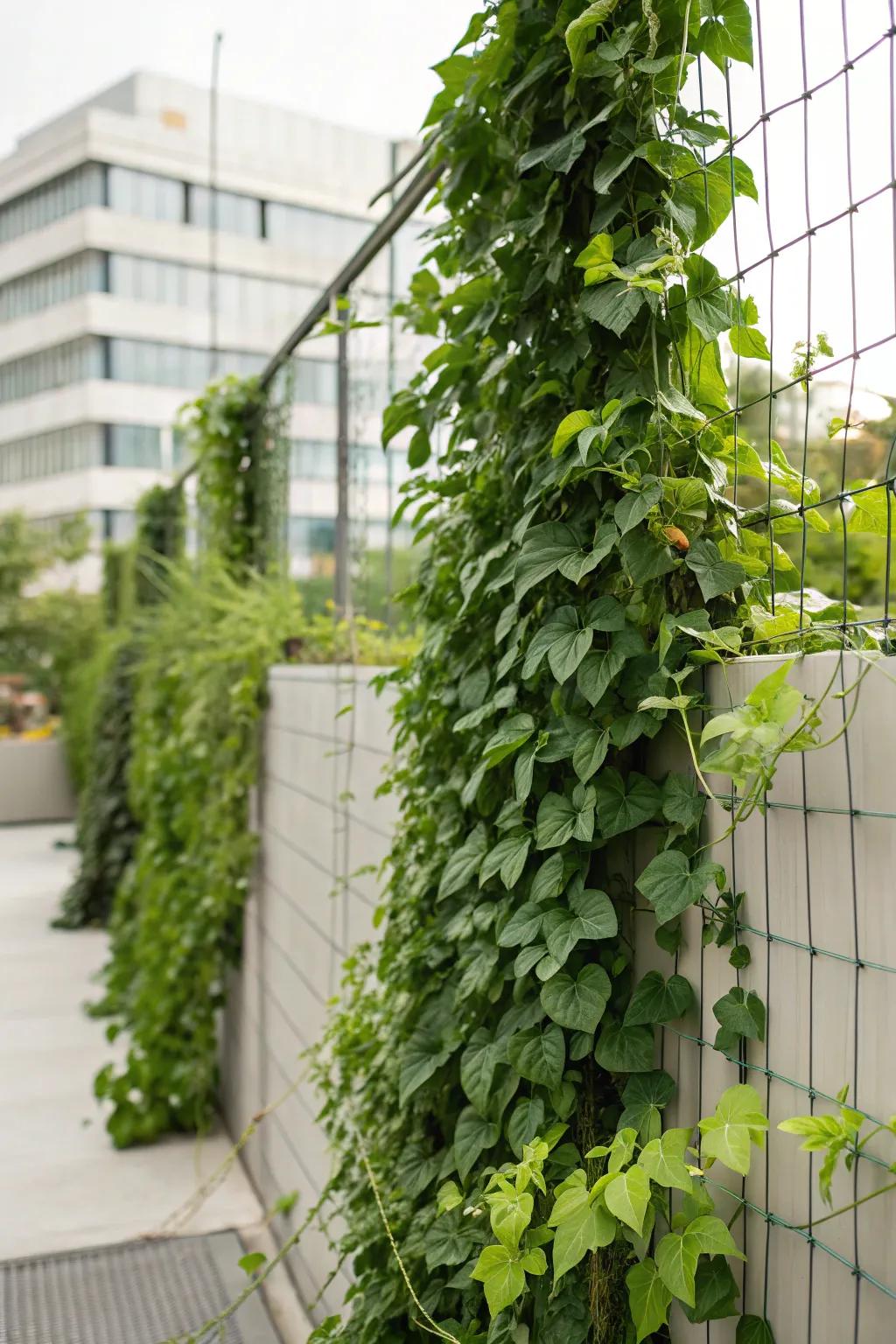
Create a vertical garden with wire mesh and climbing vines. It’s a perfect solution for smaller yards needing a lush touch.
Maybe worth checking out:
- Galvanized Wire Mesh Roll: Install a sturdy framework for your vertical garden with this durable galvanized wire mesh.
- Climbing Vine Plant Seeds: Add color and life to your living wall with these vibrant climbing vine seeds.
- Adjustable Plant Support Clips: Secure your plants to the wire mesh effortlessly with these adjustable plant support clips.
12. Surprising Espaliered Fruit Trees
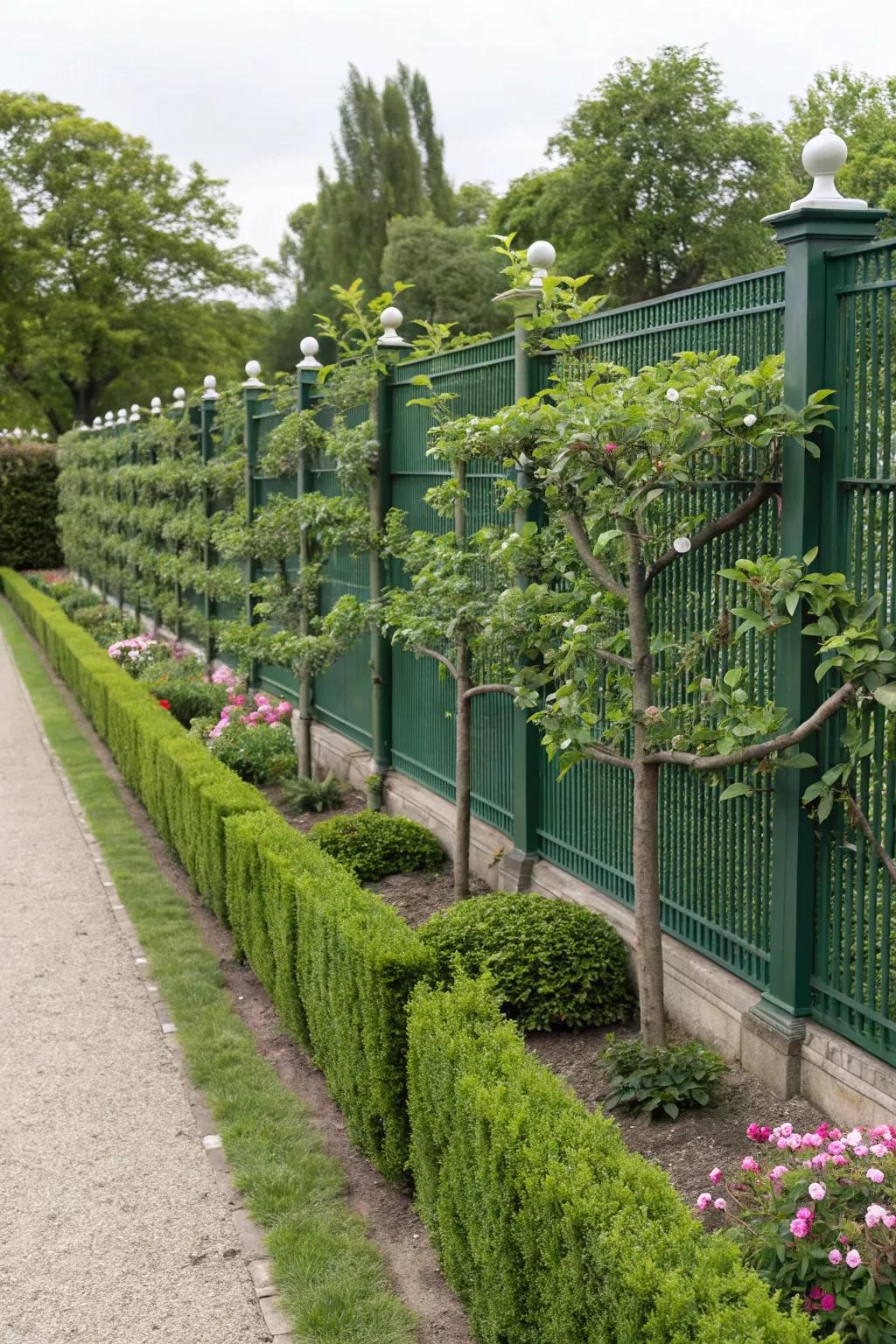
Turn your fence into an orchard with espaliered fruit trees. This method gives you privacy and fresh produce – a win-win in my book!
May just do the trick:
- Espaliered Apple Tree Starter Kit: Transform your fence with this apple tree starter kit; enjoy fresh produce and lush privacy.
- Stainless Steel Garden Pruners: Keep your espalier trees neat with these precise garden pruners for effortless shaping.
- Adjustable Tree Support Trellis: Provide sturdy support for espaliered trees, ensuring optimal growth and stability along your fence.
13. Mixed Border Plantings
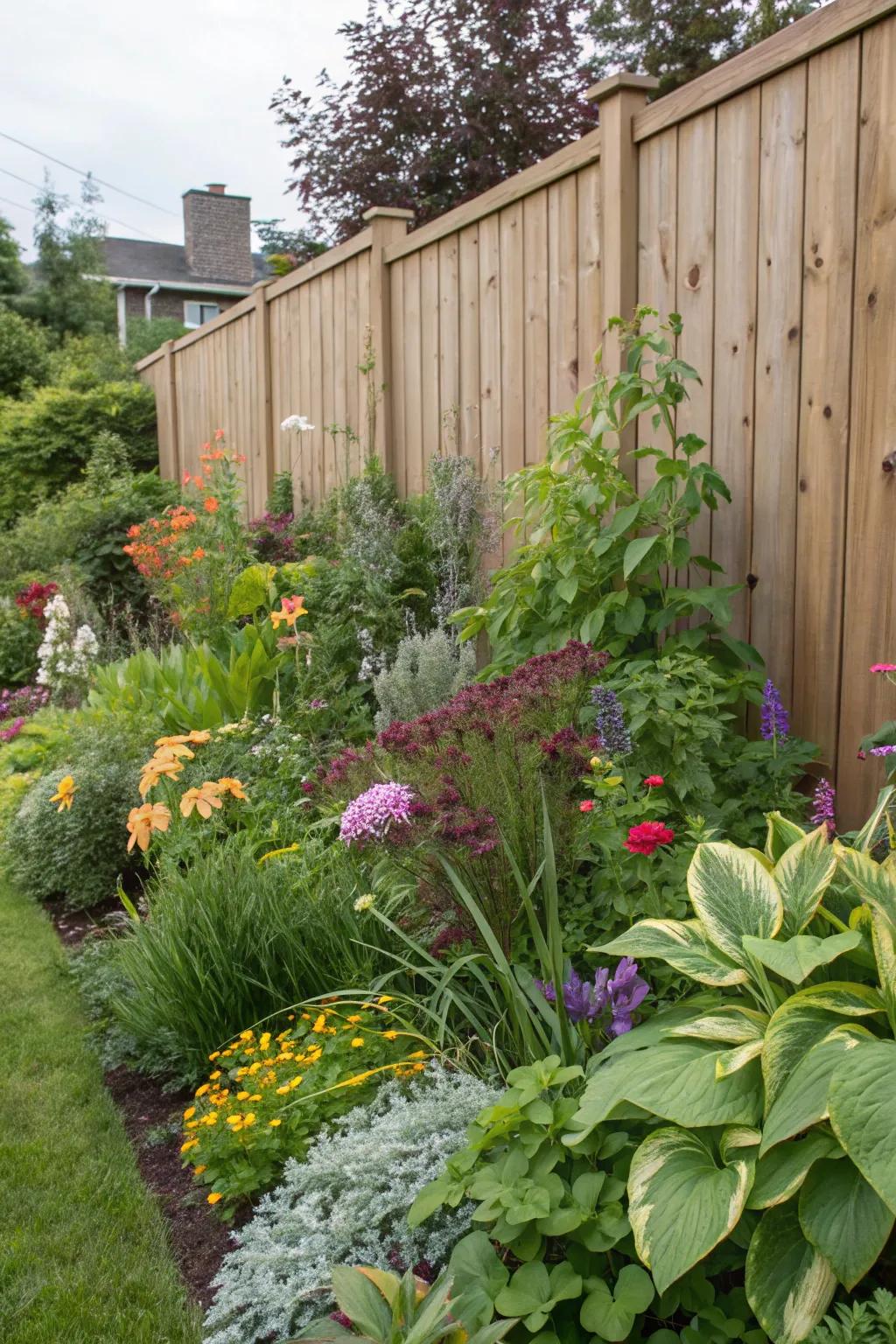
Why settle for a single plant when you can have a medley? Mixing different species along your fence creates a tapestry of color and texture.
Items that may come in handy:
- Perennial Flower Seed Mix: Enhance your garden’s beauty with a diverse mix of colorful perennial flowers today.
- Garden Soil Mix for Flower Beds: Boost plant health and growth with nutrient-rich garden soil for vibrant flower borders.
- Gardening Hand Tool Set: Equip yourself with essential tools for creating and maintaining beautiful mixed border plantings.
14. Container Gardens on Fences

No garden bed? No problem! Attach containers to your fence to create a tiered garden. It’s a space-saver and a showstopper.
These products might be useful:
- Set of Colorful Hanging Planters: Brighten your fence with colorful hanging planters, perfect for vibrant displays of flowers or herbs.
- Adjustable Pot Hanging Hooks: Easily mount your planters with these adjustable hooks, designed for various fence types.
- Wall-Mounted Plant Holder Racks: Optimize space and style with sturdy plant holder racks, ideal for creating tiered gardens.
15. Aromatic Lavender Hedges
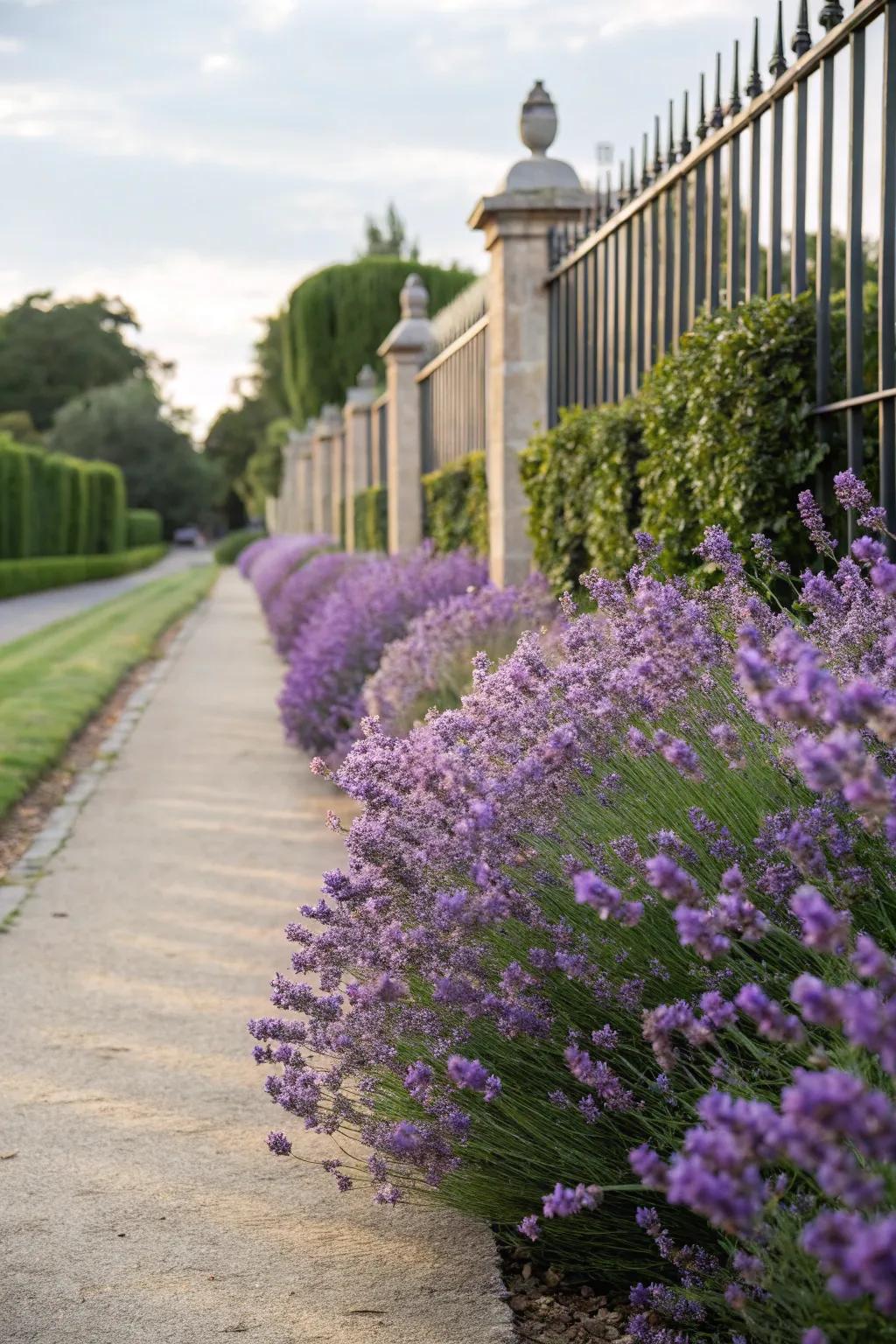
For a sensory delight, plant lavender along your fence. The fragrance is heavenly, and it’s a pollinator’s paradise!
Might be a good match:
- Lavender Plant Seeds: Cultivate stunning lavender hedges from seeds; savor their fragrance and appeal to pollinators.
- Garden Soil Mix for Lavender: Ensure optimal growth for your lavender hedges with this specially formulated garden soil mix.
- Drip Irrigation Kit: Maintain perfect moisture levels for your lavender hedges using a simple drip irrigation system.
16. Natural Stone Borders
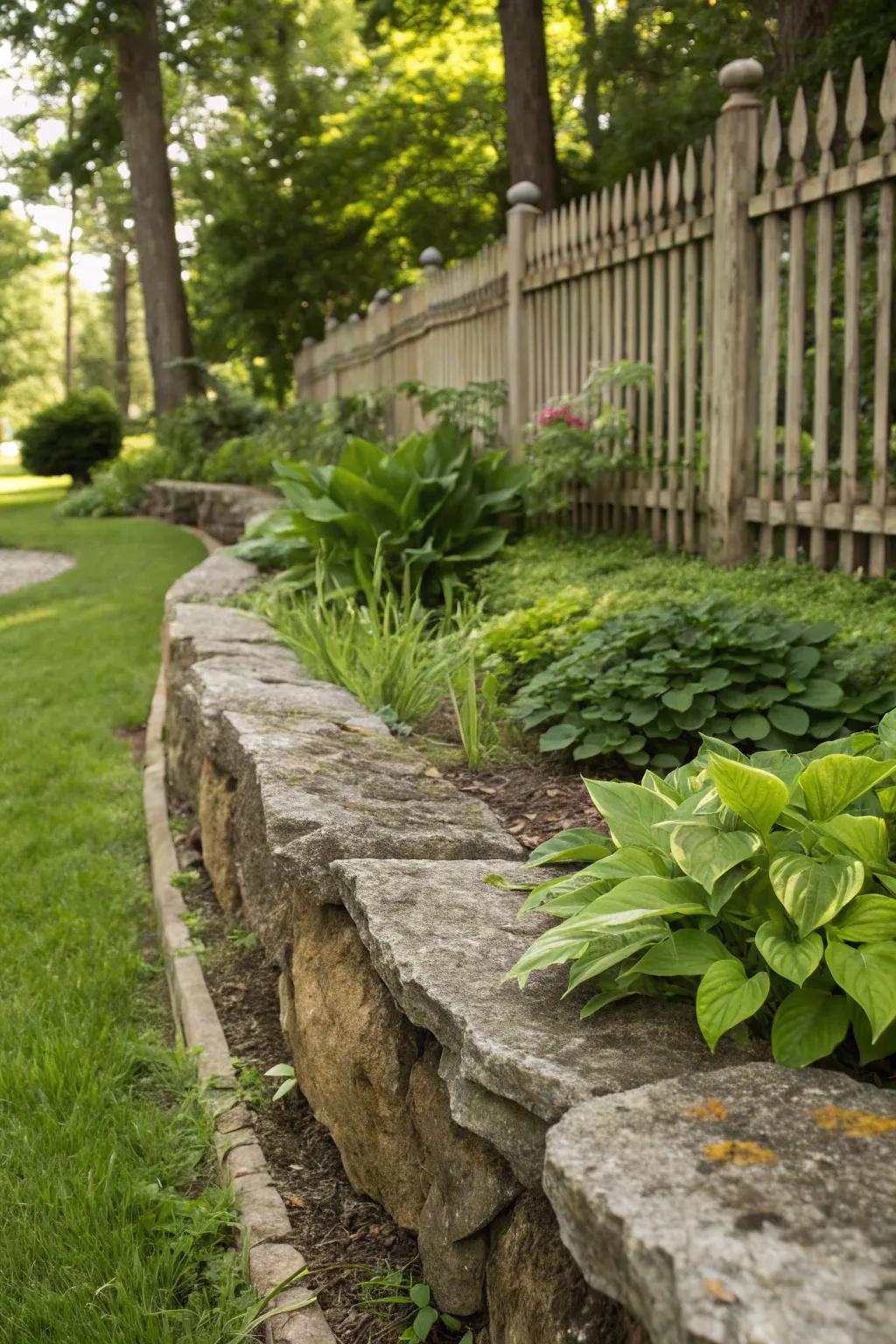
Pairing plants with natural stone creates a rustic, earthy vibe. I’ve found that stones add texture and contrast, making the greenery pop.
Possibly handy products:
- Natural Stone Pavers: Enhance your garden’s rustic vibe with durable stone pavers. Easy to install and maintain.
- Garden Edging Stones: Define your plant borders beautifully with versatile and weather-resistant garden edging stones.
- Rustic Stone Wall Panels: Add texture and warmth with these easy-to-install rustic stone wall panels for your garden.
17. Vertical Gardens on Fences
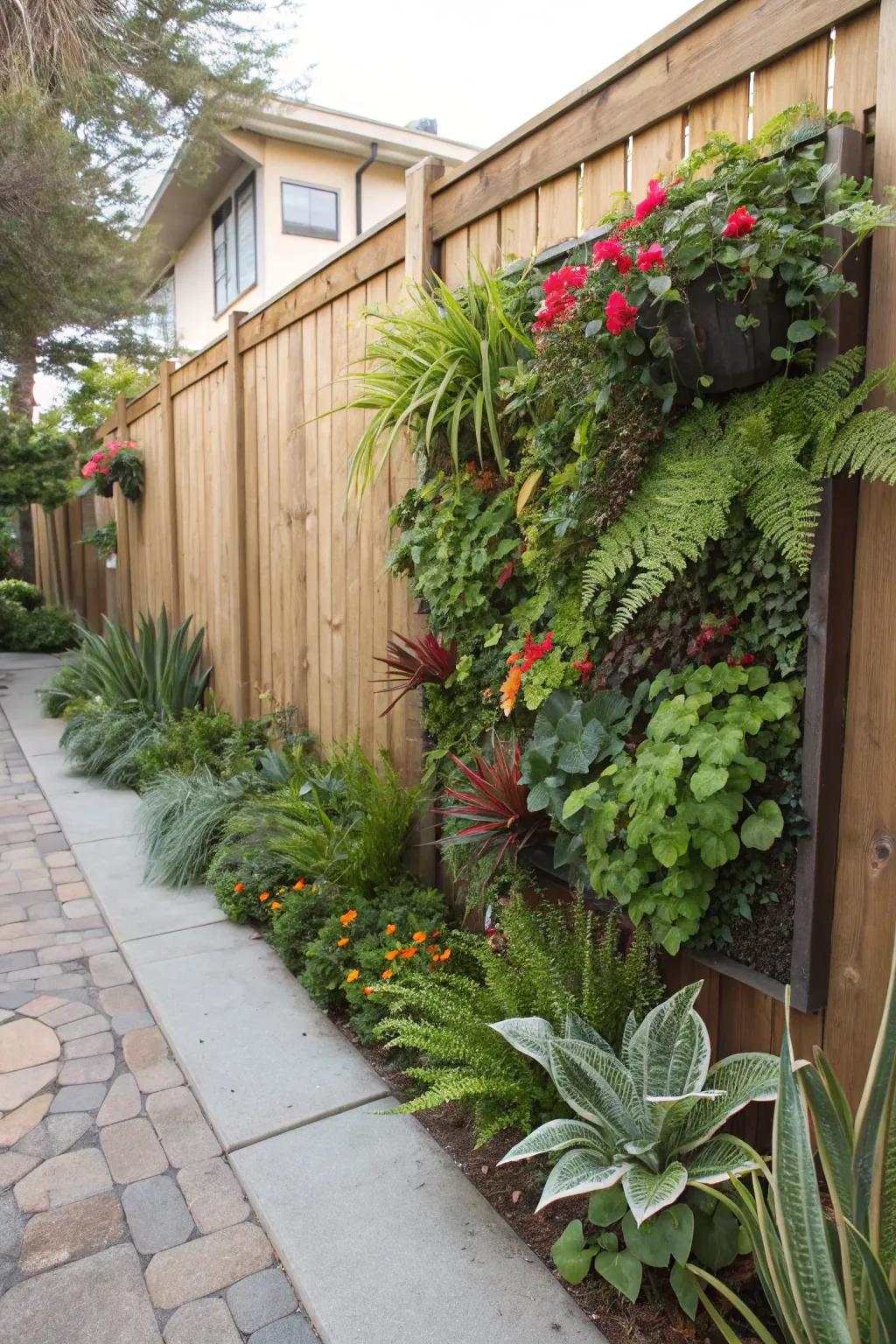
Got a plain fence? Spice it up with a vertical garden! I’ve found that using planters to create a lush, living wall is an easy way to add greenery.
Check these products out:
- Wall-Mounted Planter Panels: Transform any fence into a lush living wall with easy-to-install planter panels.
- Self-Watering Vertical Planters: Ensure consistent hydration for your vertical garden with these convenient self-watering planters.
- Heavy-Duty Hanging Plant Pots: Securely hang your favorite plants on any fence with these robust hanging plant pots.
18. Unexpected Coppice Fencing
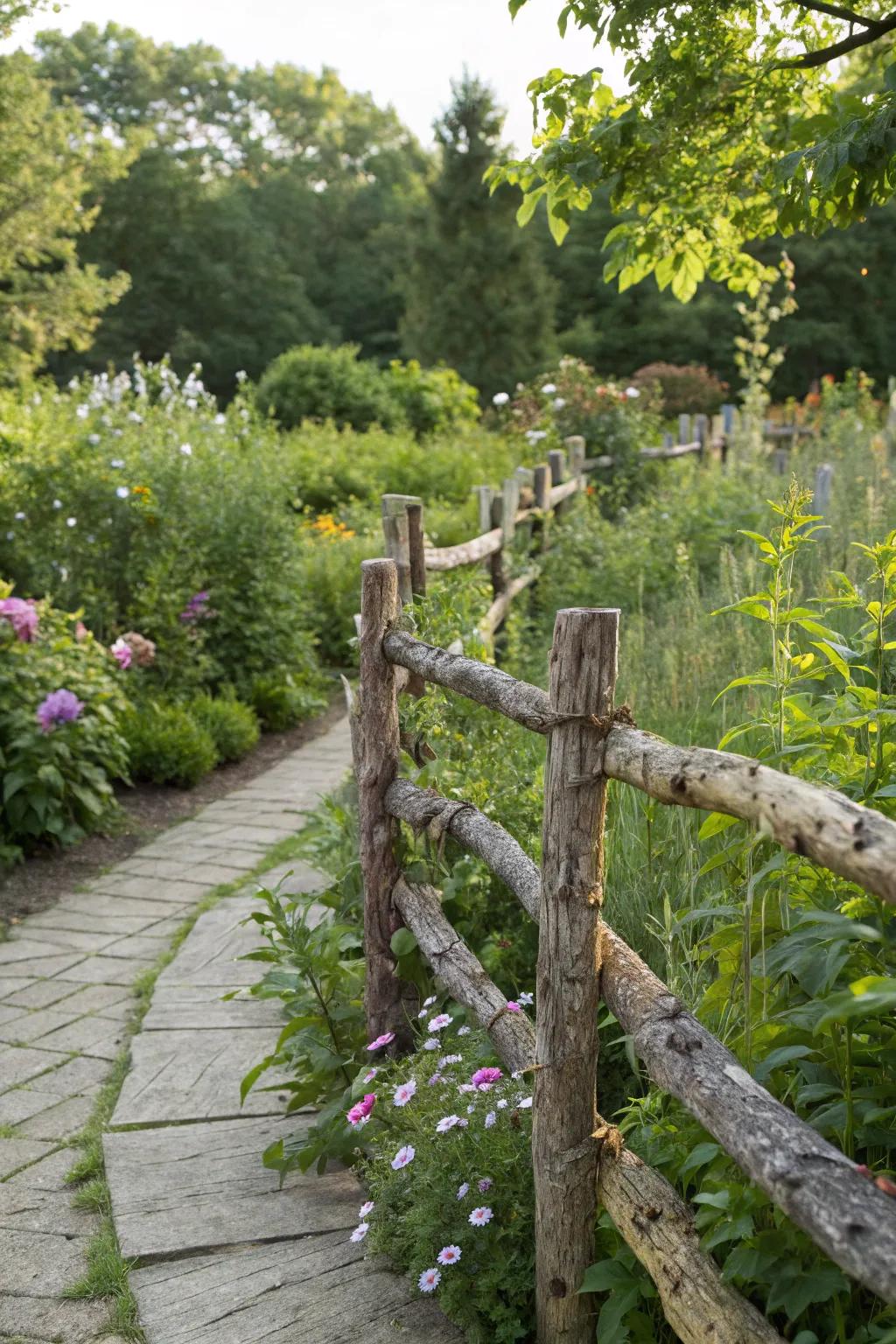
Embrace a traditional technique with coppice fencing. It not only provides privacy but also offers a source of materials for crafts.
You might like:
- Natural Wooden Fence Kit: Enhance your garden with this rustic wooden fence kit, perfect for DIY projects and privacy.
- Coppicing Hand Tools Set: Get accurate cuts with this essential coppicing hand tools set for your gardening and crafting needs.
- Eco-friendly Garden Tie Twine: Secure your fencing naturally with this durable, eco-friendly garden tie twine, ideal for outdoor use.
